How to Make Lotion Bars Plus Recipes

Learn how to make lotion bars with this informative guide. Plus explore an array of solid lotion bar recipes to help you care for dry skin.
What is a Lotion Bar?
A solid lotion bar serves the same purpose as a bottle of lotion to moisturize and hydrate skin. It contains the same oil and fat ingredients that regular lotion does, however there’s no water included in the recipe. Not only does this make a lotion bar recipe easier to make than traditional lotion, it also makes a very concentrated oil and butter lotion that delivers the ingredients without diluting them. This makes hard lotion bars especially suited for very dry or damaged skin. You’ll find it works similarly to how lip balm works for lips.
In addition, lotion bars are an eco-friendly alternative to regular lotion which comes in a plastic bottle.
DIY Lotion Bars
Making lotion bars with beeswax is a quick, easy and fun project for those wanting to make their own skin care products. As hard lotion bars are solid, they don’t include water in the recipe. This makes them an easier alternative to make compared to traditional lotion recipes as you won’t need to worry about properly preserving the final product.
This natural recipe is formulated with 3-ingredients and an optional fourth component for a unique way to moisturize and nourish dry skin. As this recipe does not contain any added fragrances, it’s a wonderful solution for sensitive skin. However, I do provide information on how to scent your formulations, if desired.
Keep reading to learn how to make lotion bars for dry skin and eczema. This easy recipe for natural skin care is formulated using beeswax and your choice of a moisturizing body butter and carrier oil. So, it’s easy to create a DIY hard lotion using a custom recipe that suits your skin care needs. Discover the process necessary to create skin care products for an at home spa day. Plus explore other solid lotion bar recipes you can craft at home.
Lotion Bar Benefits
There are number of benefits you’ll enjoy when using DIY lotion bars as part of your natural skin care routine. Following are some of the benefits:
- Lotion bars can be used all over your body, are are especially suited for hands and feet due to its intensely moisturizing properties.
- There’s also no water in this recipe, so solid lotion bars protect skin in a similar way to a salve. Additionally, this means you won’t have to worry about your lotion going bad and you don’t need a preservative.
- Another benefit of hard lotion bars is that you can place these solid lotion bars in a tin and carry them in your purse. They are easy to use on the go without the fear of a lotion bottle spilling, busting or leaking in your favorite bag or purse.
- Lotion bars are made with ingredients designed to quench and nourish dry skin. Therefore, the butters and oils used to make this product moisturize and condition skin.
- Beeswax is such a wonderful ingredient. When used to make solid lotion bars with beeswax, the wax not only helps keep skin hydrated, but it also forms a barrier on skin that offers natural skin protection.
- This product, as it’s made using natural ingredients, is a clean beauty product for natural skin care.
- As lotion bar recipes are formulated without water, they are more concentrated than traditional lotions. As such, they moisturize better than many traditional creams and lotions found on the market today.
What Ingredients Should I Use to Make Hard Lotion Bars?
To create a custom lotion bar, you need to first learn about the properties of the ingredients you are using to formulate the recipe. This will help you determine which ingredients work best for your skin type or the end goal you wish to achieve with this skin care product. Following is a brief overview of some of the ingredients mentioned in my solid lotion bar recipe (below) to help you decide which ones will work best for your application.
Cosmetic Body Butters
Most cosmetic body butters provide similar properties in skin care recipes as they are all contain a high amount of essential fatty acids that benefit skin. However, you will find that the properties of these butters do vary slightly. Here are some of the butters you can use to make hard lotion:
- Kokum butter contains beneficial compounds that are known help regenerate skin cells and support the elasticity and flexibility of the skin wall. It’s commonly used in skin healing lotions, creams and body butters, as well as soaps, cosmetics, and toiletries and is highly recommended to those that are crafting skin care recipes with the intent of producing a skin-healing end product. It has a long shelf life of around 3 years unlike cocoa butter which has an average shelf life of only one year.
- Mango butter also has a long, three year shelf life. Mango butter has natural emollient and skin regenerating properties. It’s been traditionally used in the rainforest and tropics for its skin softening, soothing, moisturizing, and protective properties. In addition, mango butter is also a great source of essential fatty acids.
- Shea butter has an approximate two year shelf life under proper storage conditions and has been used for centuries in Africa for its moisturizing and healing properties and to protect and condition damaged skin. Shea butter is naturally rich in Vitamins A and E, essential fatty acids and other vitamins and minerals, and, in addition to its moisturizing and healing properties, shea butter also offers a low level of UV protection (approximately SPF-6). Used alone, shea butter makes a great summer moisturizer to use both before and after sun exposure to reduce the possibility of the skin peeling or dryness.
- Cocoa butter: Cocoa butter is a plant fat that is pressed from the seeds of the cacao tree. It is used to make both chocolate as well as natural skin care products. In skin care, cocoa butter helps to thicken skin moisturizers and other body care products as well as add a creamy texture. It is a moisturizing, hard butter that is solid at room temperature. When roasted, cocoa butter has an amazing chocolate scent. Therefore, it’s a popular ingredient when making chocolate body butter.
Carrier Oils
Carrier oils are essentially vegetable oils used for making cosmetics, aromatherapeutic applications and soapmaking. There are many different carrier oils you can choose from ranging from apricot kernel oil to wheat germ oil. In the end you should choose the one that best suits your own skin care needs. Here I cover two carrier oils that may be used in this recipe: sunflower oil and jojoba oil. While jojoba oil is technically a liquid plant wax, it is treated as a carrier oil in skin care applications.
- Sunflower oil is an easily accessible and affordable carrier oil option. It’s high oleic acids as well as vitamins A, D, and E, lecithin, and unsaturated fatty acids. When used in skin care recipes it is deeply nourishing and and skin conditioning and is highly recommended for recipes designed to treat dry, weathered, aged, and damaged skin.
- Jojoba oil, because it is a liquid plant wax, is very shelf stable. It’s favored in skin care recipes as its absorption properties are similar to our skins own sebum and is commonly used to help cleanse the scalp. It’s considered to be an excellent moisturizer and is believed to help improve skin elasticity and suppleness. It is also one of the “driest“ natural oils available.
Solid Lotion Bar Recipe with Beeswax
This homemade solid lotion bar recipe helps you say goodbye to dry skin while at the same time ditching that cliché plastic bottle of lotion. Not only is this solid lotion bar DIY super easy to make, it’s a thoughtful homemade gift idea for just about any occasion. Once you’ve tried this simple skin care recipe, be sure to check out similar DIY’s at the end of this post.
Hard Lotion Ingredients
These are the ingredients you need to use to make lotion bars at home. The first three are necessary, with the fourth ingredient being optional.
- Cosmetic Body Butter: A moisturizing body butter is used for its unique properties that nourish and condition skin. Cosmetic body butters are rich in essential fatty acids that penetrate dry skin to keep it hydrated, soft and supple. To make this hard lotion bar with beeswax, I recommend using either kokum butter, cocoa butter, mango butter or shea butter. The harder butters, such as kokum and cocoa, help to make solid lotion bars harder, so they are less likely to melt. Hard butters are ideal for warmer climates. While semi-solid butters, such as mango and shea butter, have a lower melting point and are ideal for colder climates or winter skin care.
- Beeswax: I used beeswax pastilles rather than a block of beeswax for its ease of use. Unlike a solid beeswax block, beeswax pastilles come in an easily manageable form that is ready to be melted — no grating or shaving necessary! This ingredient is used to solidify the lotion bar mixture so that it stays solid when not in use. Beeswax also acts as a humectant, locking moisture into skin, and works to protect skin from the elements.
- Carrier Oil: A liquid carrier oil is necessary to keep your DIY lotion bars from being too hard. They help to reduce the melting point of the lotion by softening the hard lotion just enough that it melts at skin temperature. Therefore, when the lotion is massaged onto skin, some of the product melts into skin and remains behind.
- Jojoba Beads: To give this skin care product extra glide and hydrations, you can also add jojoba wax spheres or colored jojoba beads to this solid lotion bar recipe. Colored beads will give your lotion a pretty tint if desired. This ingredient also helps to solidify the product and will make your lotion bars less greasy. However, this ingredients is optional and may be omitted.
Equipment and Tools
To make solid lotion bars, you will need some additional equipment and common kitchen tools. They are as follows:
- Digital Kitchen Scale: A kitchen scale is used to weigh out the ingredients called for in the recipe.
- Molds: As the formulation for this lotion bar recipe starts out as a liquid, much like when you learn how to make soap, you will molds to pour the lotion into while it hardens. You can use any existing soap making or small silicone molds that you have on hand. Alternately, those mini ice cream cups also work great for one-time use molds.
- Heat Source: The ingredients for this skin care DIY need to be heated in order to melt them so they can be combined. You can use either a double boiler or a microwave to melt the wax and butter. If using a double boiler, heat the contents over medium heat on the stove top. For a microwave, melt the ingredients at 50% power in a heat-safe container, stirring at regular intervals until melted.
- Containers: I recommend using a 16 oz. Pyrex measuring cup to mix the ingredients for this recipe. Not only is it heat-safe, but it also has a spout that makes pouring the formulation in the molds quick and easy. You will also need a glass bowl to weigh the ingredients into prior to melting.
- Utensil: You will need a spoon or silicone spatula to mix the ingredients called for in this hard lotion recipe.
How to Make Solid Lotion Bars
It’s quick and easy to learn how to make solid lotion bars without beeswax. All you need to do is melt, mix and mold the ingredients. Here the steps to follow to make this hard lotion for dry skin:
- Begin by weighing out the ingredients using a digital scale. You will start by heating the butter and beeswax first, then follow with the additional ingredients.
- Add the correct amount by weight of the body butter you’ve chosen in a heat-safe container. Then melt the butter in either a microwave or double boiler. If using a double boiler, melt the butter over medium heat. Otherwise, heat at 50% power in the microwave.
- Once the butter has melted, mix in the beeswax and jojoba beads. Heat until all the ingredients have melted. Then stir.
- Now add the liquid carrier oil you opted to use for this recipe. This amount may vary depending on your climate and how hard or soft you’d like your lotion to be.
- Mix thoroughly. If using a fragrance, add either the essential oil or fragrance oil at this point after the mixture has cooled slightly.
- Pour the liquified solid lotion bar into small soap or silicone molds. Pop out once the bars have cooled and hardened.
Tips for Making Lotion Bars
This recipe for solid lotion bars is fairly straight forward. However, here are some tips to help you make the perfect lotion bar for dry skin and eczema:
- To create a harder lotion bar, add 4 ounces of the carrier oil called for in the recipe. To make your lotions bars softer, for a hard bar, use 5 ounces of the chosen carrier oil for this recipe.
- If you’d like to scent this DIY beeswax lotion bar, you may do so by adding either a fragrance oil or essential oil. This ingredient should be added when mixture has cooled slightly. I recommend up to 1 oz. of essential oil or up to 2 oz. of skin safe fragrance oil. However, double check to ensure that you aren’t exceeding recommended usage guidelines for the fragrance you’ve chosen.
- If you don’t have a silicone mold for this project, you can use single serving ice cream containers. I like to save and wash these for one time use molds after the ice cream is gone.
- It takes approximately 2 hours for the lotion bars to solidify. However, this may vary depending on the room temperature in your home. To speed up cooling times, you can place the lotion in the mold in the fridge until hardened. Alternately, for help removing lotion bars from the mold, I recommend that you place the molds in the refrigerator for a few minutes prior.
For answers to common questions about making lotion bars, be sure to check out this faq on how to make solid lotion here.
Solid Lotion Bar Recipes
If you like my solid lotion bar recipe with beeswax, then be sure to explore these other recipes for making lotion bars at home:
- Dandelion Lotion Bar: Made using dandelion infused oil, these DIY hard lotion bars are easy to use and perfect for travel. This natural body moisturizer recipe is made with moisturizing ingredients to nourish skin.
- Aloe After Sun Lotion Bar: This natural aloe after sun lotion recipe helps rescue sunburned skin. A vegan friendly moisturizer, this hard lotion bar is perfect for after sun summer skin care. Learn how to make your own easy aloe after sun lotion bars. Plus discover other natural sunburn remedies to try in a pinch.
- Halloween Solid Lotion Bars: As the weather cools off and spirits skirt through the city, it’s time to reevaluate our skin care needs for the new season. This easy Halloween solid lotion bar recipe offers the perfect spook-tacular mix of fun and function for fall. You can even make these with glitter for a fabulous handmade gift idea everyone will love!
- DIY Dog Paw Balm: Pets paws, while different from their human counterparts, are also susceptible to damage from hot pavement, the elements and other factors. You can help soothe and moisturize damaged or irritated paws with this best dog paw balm recipe. Learn how to make a natural solid pet balm for your furry family!
- Matcha Green Tea Lotion Bars: This Matcha green tea lotion bar recipe is made with skin nourishing tea seed oil and matcha green tea. These natural ingredients combine to create a luxurious non-greasy solid lotion bar that melts onto skin upon application. Unlike recipes for traditional lotions bars, these non-greasy lotion bars absorb quickly and won’t leave your skin feeling greasy.
- Solid Lotion Bars without Beeswax: This vegan solid lotion bar recipe is made with soothing oat butter, plantain infused olive oil and lavender essential oil. Crafted without beeswax, this hard lotion bar is the perfect treat for sunburned skin this summer. Also be sure to try this vegan friendly body moisturizer DIY on dry or rough feet, hands and elbows!
- Cranberry Chutney Solid Lotion Bars: This cranberry chutney solid lotion bar DIY makes a wonderful last minute stocking stuffers or homemade Christmas gift! These homemade lotion bars are both quick and easy to make and they’re ready to go within hours of making them. In addition, they’re also a snap to make in bulk for holiday party favors or gift giving in large groups.
- Snowflake Hard Lotion Bars: Naturally care for your dry or chapped skin this winter with this seasonal snowflake shaped hard lotion bar recipe. The perfect dry skin remedy, this easy DIY lotion moisturizes skin to soothe away irritation and dryness. It also makes a wonderful holiday gift idea or stocking stuffer for friends, family, coworkers and teachers!
- Pain Relief Massage Melts: Learn how to craft quick and easy natural massage melts with this simple, natural skin care recipe. A natural solid substitute for massage oils, this quick and easy natural massage melts recipe is an eco-friendly, green beauty alternative.
For more natural ways to care for dry skin, be sure to follow Soap Deli News online. You can find and follow me on Facebook, Twitter, Instagram as well as on Pinterest.
Enjoyed the project?
Ingredients
- 4 oz. kokum butter or mango butter or shea butter
- 4 oz. beeswax pastilles
- 4 oz. - 5 oz. jojoba oil or sunflower oil or other carrier oil
- 1 Tablespoon jojoba wax spheres or colored jojoba beads, optional
Instructions
- Weigh out all of your ingredients using a digital scale.
- Melt the butter you've chosen for this lotion bar recipe in either a double boiler. If using a microwave to heat the ingredients, do so at 50% power.
- Once melted, pour the cosmetic butter into 16-ounce Pyrex measuring cup. Add the beeswax and jojoba beads to the mixture and stir to combine.
- Heat the mixture again, either using a double boiler or microwave, until all the ingredients have melted.
- Remove from heat. Then add the liquid carrier oil. using 4 ounces for a hard bar, or 5 ounces for a softer bar. Mix thoroughly.
- Now evenly pour the liquified lotion bars into small soap or silicone molds of your choice.
- Once the bars have cooled and fully hardened, pop them out the mold.
The author may collect a small share of sales from the links on this page.

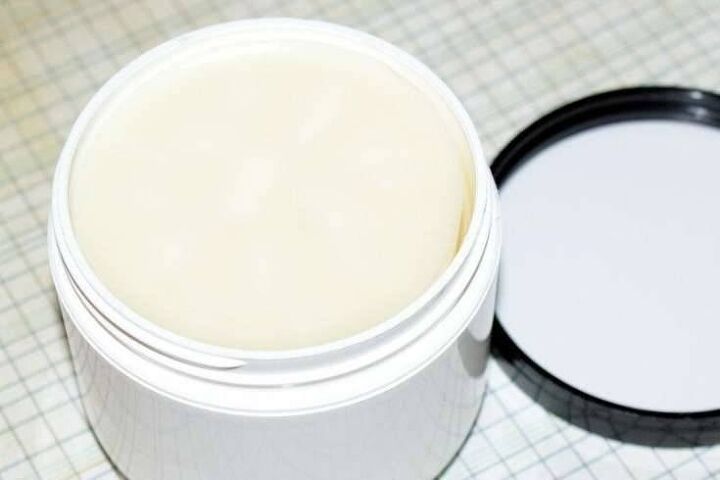
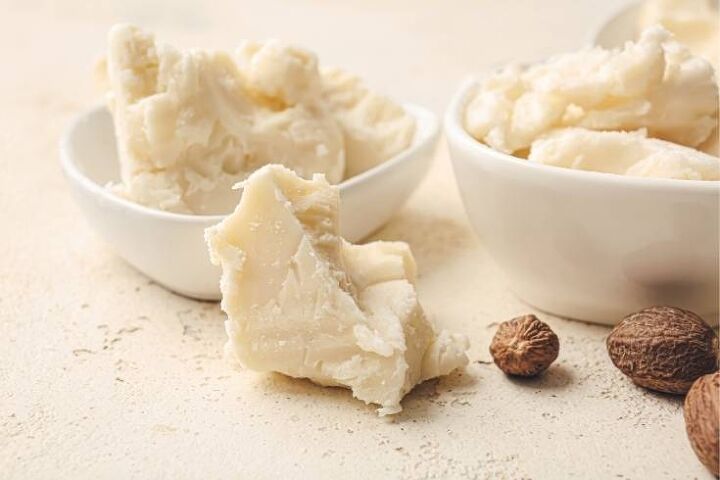



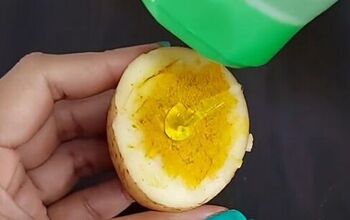
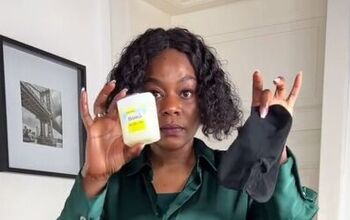
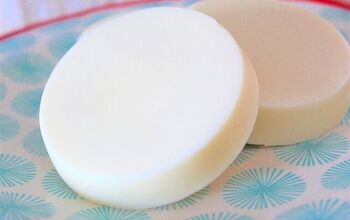

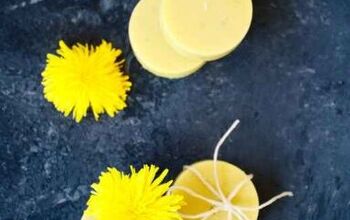

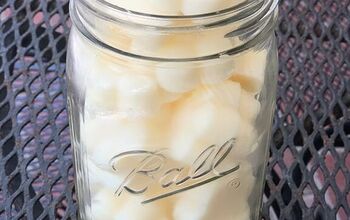
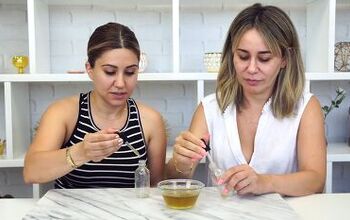
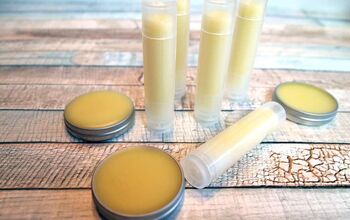
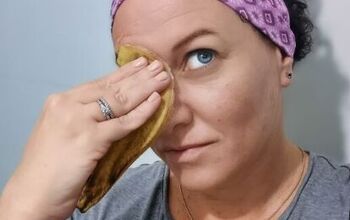
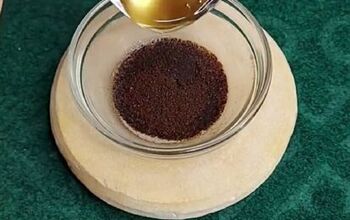

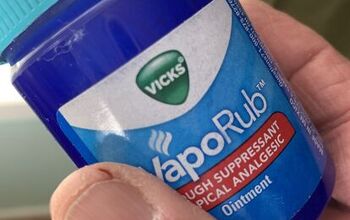
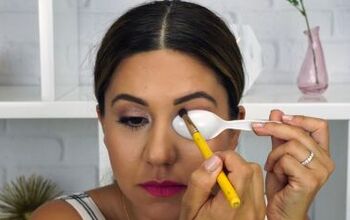
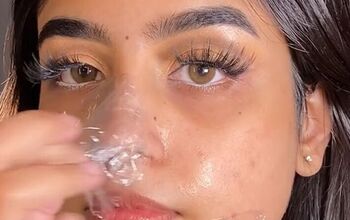
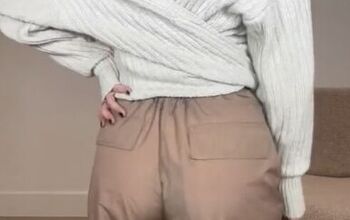

Comments
Join the conversation